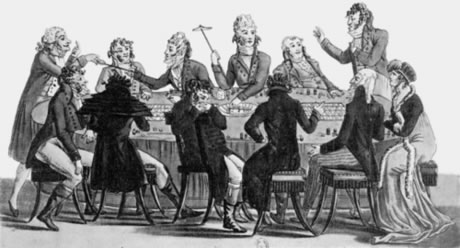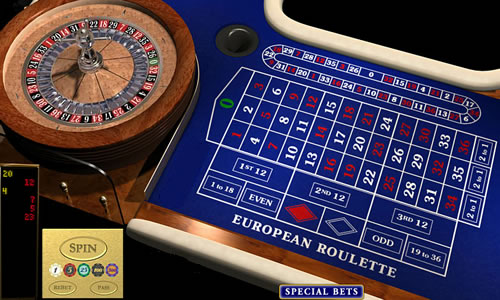How to play Roulette, a brief Introduction to this Casino Game
1. The History of Roulette: From Monastic Origins to Modern Casinos
Roulette, one of the most iconic casino games, boasts a rich history shrouded in mystery and intrigue. Whether you’re learning how to play roulette or exploring its origins, understanding its evolution enhances your appreciation for this timeless game.
Origins of Roulette: Monks, Mathematicians, and the “Devil’s Game”
The exact origins of roulette remain debated, but two theories dominate:
- Monastic Roots: Some claim a 17th-century French monk invented an early version to combat boredom.
- Blaise Pascal’s Influence: More widely accepted is the theory that mathematician Blaise Pascal created a primitive wheel during his 1655 experiments with perpetual motion. The name “roulette” derives from the French term for “little wheel.”
By 1720, a similar game called “roly-poly” emerged in England, combining a wheel and ball. Banned under gaming laws, it resurfaced as “EO” (Even-Odd), though legal troubles persisted.

The Birth of Modern Roulette: The Blanc Brothers’ Legacy
In 1842, French brothers François and Louis Blanc revolutionized roulette by introducing the single-zero wheel, boosting the house edge to 2.7%. Legend claims François bargained with the devil for its secrets—a tale fueled by the wheel’s numbers (1–36) summing to 666, the “number of the beast.”
When gambling was banned in France, Prince Charles III of Monaco invited Louis Blanc to establish Monte Carlo’s famed casino in 1863. This move cemented Monaco as Europe’s gambling epicenter and standardized the European roulette wheel still used today.
Roulette Crosses the Atlantic: The American Double Zero
During the 1800s Gold Rush, roulette surged in popularity across America. Casinos added a double-zero (00) to increase the house edge to 5.3%, creating American roulette. This version dominated U.S. casinos until WWII, when blackjack’s rise (fueled by Edward O. Thorp’s 1963 strategy guides) overshadowed it.
Why Roulette History Matters for Players Today
Understanding roulette’s past reveals key insights:
- European vs. American Wheels: The single-zero (2.7% house edge) offers better odds than the double-zero (5.26%).
- Monte Carlo Standards: Modern casinos emulate its elegant, high-stakes style.
- Strategic Legacy: While luck-based, bankroll management and bet selection strategies stem from centuries of play.
2. How to Play Roulette: Rules and Bets

The Roulette Wheel
- European Roulette: 37 slots (numbers 1–36 + single 0) with a 2.7% house edge.
- American Roulette: 38 slots (1–36 + 0 and 00) with a higher 5.26% house edge.
Betting & Gameplay
- Place Bets:
- Inside Bets: Directly on numbers (1–36, 0, 00) for high-risk, high-reward payouts (up to 35:1).
- Outside Bets: On broader categories (Red/Black, Odd/Even, Columns) with lower risk (1:1 to 2:1 payouts).
- The Spin:
- The dealer spins the wheel and rolls the ball in the opposite direction.
- When announcing “No more bets!”, all wagers are locked.
- Results:
- The ball settles into a numbered slot.
- Winning bets are paid; losing bets are cleared.
Key Rules & Tips
- European Advantage: Play single-zero wheels for better odds.
- La Partage Rule: In European roulette, recover half on even-money bets if the ball lands on 0.
- Speed: Games move quickly—decide bets before the dealer’s final call.
3. Types of Roulette Bets (With Payouts)
Inside Bets
| Bet Type | Description | Payout |
|---|---|---|
| Straight Up | Single number (e.g., 17) | 35:1 |
| Split | Two adjacent numbers (e.g., 14/17) | 17:1 |
| Street | Three numbers in a row (e.g., 1-2-3) | 11:1 |
| Corner | Four-number square (e.g., 1-2-4-5) | 8:1 |
| Six Line | Two adjacent streets (e.g., 1-6) | 5:1 |
Outside Bets
| Bet Type | Description | Payout |
|---|---|---|
| Red/Black | Bet on color | 1:1 |
| Odd/Even | Bet on number parity | 1:1 |
| High/Low | Numbers 1–18 (Low) or 19–36 | 1:1 |
| Dozen | First (1–12), Second (13–24), or Third (25–36) dozen | 2:1 |
| Columns | One of three vertical columns | 2:1 |
4. Useful Tips for playing Roulette
- Choose European Roulette
Opt for single-zero wheels (European) over double-zero (American) versions. The single zero reduces the house edge to 2.7% vs. 5.26% in American roulette, giving you significantly better odds. - Look for “En Prison” Rules
In European games, this rule “imprisons” your even-money bets (e.g., Red/Black) if the ball lands on zero. Your bet carries over to the next spin, protecting your stake from an immediate loss. - Prioritize “La Partage” Wheels
Similar to En Prison, this rule refunds 50% of even-money bets on a zero outcome, slashing the house edge to just 1.35% on single-zero wheels. - Avoid the 5-Number Bet (0, 00, 1, 2, 3)
This American roulette wager has a massive 7.89% house edge—the worst on the table. Stick to standard 6-number “street” bets instead. - Watch for Biased Wheels
Older or poorly maintained wheels might favor certain numbers. Track results over multiple spins, but don’t confuse random hot streaks with genuine mechanical bias. - Note Dealer Patterns
Some dealers release the ball at consistent speeds or angles, potentially creating predictable landing zones. This is rare in modern casinos but worth observing. - Diversify Your Bets
Spread smaller bets across the table rather than risking large sums on single numbers. Combine outside bets (e.g., Odd/Even) with a few strategic inside wagers to balance risk. - Ignore “Guaranteed” Betting Systems
No strategy beats the house edge long-term. Systems like Martingale or Fibonacci may prolong gameplay but can’t override the built-in casino advantage. - Reconsider Even-Money Bets
While simple, bets like Red/Black or Odd/Even still carry a 5.26% house edge in American roulette. For better odds, try blackjack or baccarat. - Cash Out Chips Immediately
Roulette chips have no value outside their designated table. Always exchange them for standard casino chips or cash before leaving to avoid confusion or losses.
